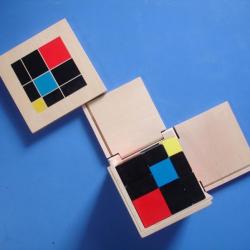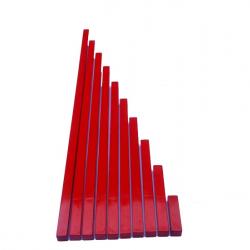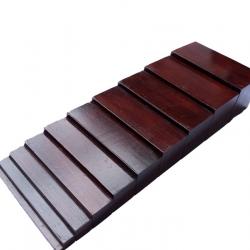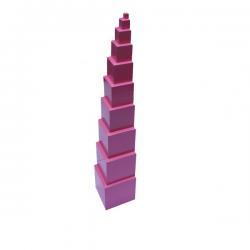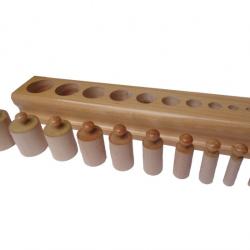Movement, or physical activity, is thus an essential factor in intellectual growth, which depends upon the impressions received from outside. Through movement we come in contact with external reality, and it is through these contacts that we eventually acquire even abstract ideas.
Dr. Maria Montessori The Secret of Childhood

What is Sensorial Work?
A child learns not just by listening but by practicing. Practical lessons are as much important for a child to understand than theoretical teachings by guardians, parents and teachers. Sensorial education provides children to develop an impeccable intellect that a text or audio lesson cannot match. While some believe that intelligence is genetically inherited or learned from the environment, that same intelligence quotient can be further improved by education. Sensorial education focuses on providing experiences and thought models & processes. Children are in awe of the surroundings, they are curious about the nature and sensorial education offers exactly the right amount of lessons for children for them to feel the reality of the product they touch, see, hear or feel.
Sensorial education does not focus on sharpening the senses but rather helps children to use their senses to understand what they are seeing. The sensorial education helps the child to become aware of details such as colors, shapes, texture, sound, smell, temperature, taste, weight, size and impressions. Impressions are mere feelings and not an intellectual developing aspect. The sensorial materials allow children to know the abstraction of color, dimensions and shapes. The materials enable children to differentiate between reality and impressions and eventually children grow up to understand to discriminate and appreciate information and various forms of art such as music, poetry, acting, writing and creativity which are all aspects of the environment.
The sensorial materials in the early education of a child help them to become aware of colors by offering details such as offering strongly contrasted sensations in blue and red colors and then variously graded sensations such as shades of blue. The sensorial materials enable children to know what is red and what is blue. Practical lessons are the most important factors in shaping a child's intellectual capability, for example, children are provided sane and different range of activities to develop control and movement, their awareness of surroundings, independent work habit, responsibility, orderly thought patterns and many other characteristics to achieve spontaneous and purposeful tasks.
Purpose of Sensorial Work
The usability and aim of sensorial education is to provide practical experiences more than theoretical teachings. When children learn with the use of sensorial materials, an inexplicable development of intellect takes place. Many people fail to understand that practical education is the utmost facilitator in molding the development of a child's mind, thinking skill and an ability to solve complex problems. More than the ability to remember and basically have exceptional memory , discovering new ways to provide solutions and understanding of the mystery helps the child to grow up and is better equipped to deal with the practical situations of life.
Sensorial materials are used to foster muscular development as all the sensorial materials involve the use of hands. Sensorial materials are solid and concrete bits of information which can be organized into meaningful patterns and they provide a particular purpose and focus. For example- laying the foundation for writing skills, visual classification of dimensions. Here, the hand and the mind act together simultaneously and make a mental coordination between an idea which is abstract and a concrete representation. Sensorial materials are self-correcting and they are produced to precise metric tolerances as the weight, size and texture of the materials play an important and pivotal role for a child to learn. The sensorial materials are meant to be simple as the correct terminology such as binomial cube and isosceles triangle, and mathematical exact relationship and various other factors which enrich the child's experience for that abstract concept and relate it to familiar reality.
Exercising Sensorial Work
Children like to explore and try new things that are found around them. Sensorial materials allow children to work individually and repetitively for better understanding and practicing for perfection. Sensorial materials allows children to classify impressions into organized, orderly and scientific manner which are built to control error and also makes then to try differently without the fear to make mistakes. The idea for utilizing sensorial materials is for a child to be comfortable in the fact that errors are essential steps to the process of learning. The self-correcting nature of materials gives the children a first hands on experience with mathematical concepts, and as teachers understand how children move towards learning and understanding concepts and the different ways of using the materials, it only helps them match and evolve with conceptual development.
When children see any new object for the first time, they want to touch and feel the same. It is necessary for a child to distinguish, categorize and to relate to information, and sensorial education provides precisely the right environment for a child to acquire clear and conscious classification.

